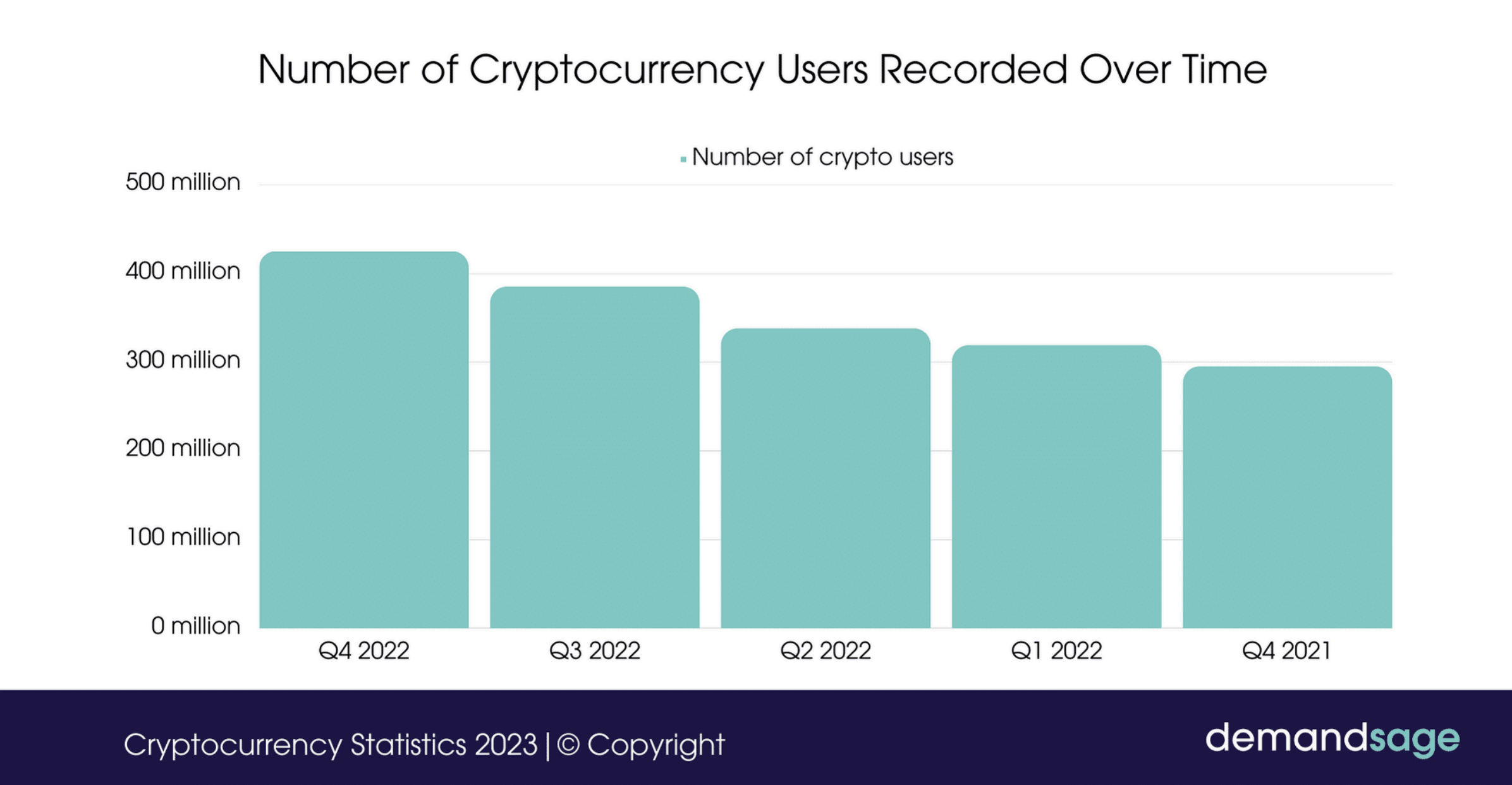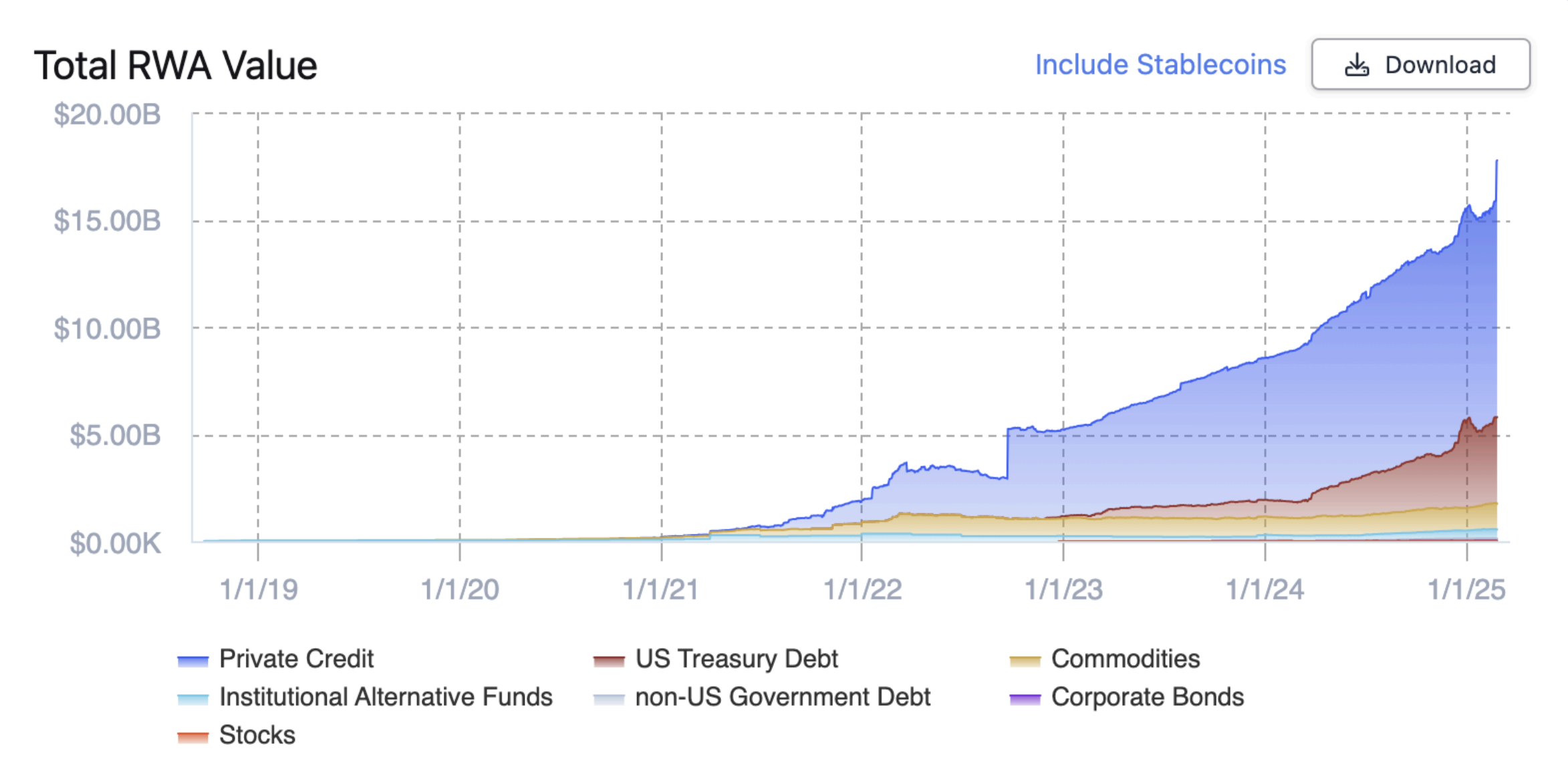Chapter I
As we explore the evolving landscape of the art market and the dynamics of online sales, it’s crucial to recognize the profound influence of blockchain and Non-Fungible Tokens (NFTs) on the digital economy at large. As traditional markets face economic uncertainties, blockchain and NFT markets have emerged as disruptive forces, reshaping ownership, transactions, and value creation across various sectors. The ascent of cryptocurrencies within the realm of blockchain technology has fundamentally altered perceptions and interactions with digital assets. The significant increase in cryptocurrency ownership signifies a growing community well-versed in blockchain fundamentals, laying the groundwork for widespread adoption of decentralized technologies and innovative asset classes like NFTs. Blockchain Adoption: A Global Phenomenon The adoption of blockchain technology has surged worldwide, with more than 420 million individuals engaging with blockchain platforms in 2023, according to DemandSage and Triple-A.
This widespread adoption reflects a fundamental shift in how people interact with digital assets and conduct transactions. As blockchain technology continues to gain traction, it not only expands its global audience but also enhances liquidity and transparency across various sectors.
This innovative trend toward decentralized systems and digital ownership aligns with the evolving landscape of the art market, offering new avenues for participation and investment.
The adoption of blockchain technology has surged worldwide, with more than 420 million individuals engaging with blockchain platforms in 2023, according to DemandSage and Triple-A.
This widespread adoption reflects a fundamental shift in how people interact with digital assets and conduct transactions. As blockchain technology continues to gain traction, it not only expands its global audience but also enhances liquidity and transparency across various sectors.
This innovative trend toward decentralized systems and digital ownership aligns with the evolving landscape of the art market, offering new avenues for participation and investment.
Chapter II
After witnessing the remarkable surge in blockchain adoption, it’s evident that decentralized technologies are reshaping the global economy. This transformative wave extends beyond digital assets, as demonstrated by the exponential growth of real-world assets (RWAs) within the crypto space. In 2023, non-stablecoin RWAs on public blockchains soared to $2.7 billion, driven primarily by yield-bearing assets such as Treasuries, real estate, and private credit. Moreover, traditional financial institutions like Franklin Templeton and WisdomTree entered into the realm of RWA by tokenizing equity-centric and money market funds. Their exploration of tokenization signifies a broader acknowledgment of blockchain’s potential to streamline asset management and enhance liquidity in traditional markets.
As RWA continues to gain prominence in the crypto space, their integration with blockchain technology presents new opportunities for investors and market participants alike.
Moreover, traditional financial institutions like Franklin Templeton and WisdomTree entered into the realm of RWA by tokenizing equity-centric and money market funds. Their exploration of tokenization signifies a broader acknowledgment of blockchain’s potential to streamline asset management and enhance liquidity in traditional markets.
As RWA continues to gain prominence in the crypto space, their integration with blockchain technology presents new opportunities for investors and market participants alike.
